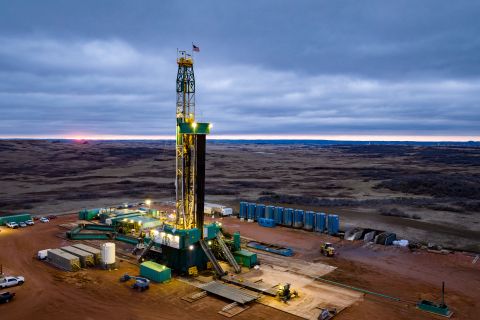
NEW YORK—As global LNG markets move fitfully away from long-term, oil-indexed prices to a more liquid and diversified spot market, financial and midstream structural challenges loom large.
“Companies already in the sector are having to move further downstream to capture demand,” said Ira Joseph, head of gas and power at S&P Global Platts at an LNG Roundtable on Jan. 25.
He also noted that just as buyers and sellers of LNG are getting their heads around the dissociation of global oil and gas prices, the market fundamentals are already changing. “What the markets really want to see is LNG priced to coal plus carbon parity,” he said. “That is historically lower than has been viable, and would mean cuts in liquefaction costs and cuts in transportation costs.”
LNG pricing was long indexed to oil, but the reality of import markets is that the competition is now coal in some regions and renewable energy in others.
“Gas is now competing with battery storage,” said Joseph. “The questions are security of supply versus intermittency. This will be a major public policy issue in countries like
As evidence, he noted the top LNG news of the winter so far, which has been the spike in gas prices in Asia. The Japan Korea Marker, which hovered around $5.50 per million Btu (MMbtu) all spring and summer of 2017 has risen steadily to greater than $11 per MMbtu at the end of December. And that despite greater volumes moving out of Cheniere’s
The spike in demand from China highlight how important national policy has become in market movement, Joseph explained.
“The spike is not sustainable, but is tied to contract increases,” he said. China is one of the few countries that still rely upon coal as a residential and commercial fuel. Those are the least energy-efficient and most-polluting uses, and so the government is replacing that with gas as fast as it can.
Beyond China and India, Richard Langberg, director of energy infrastructure ratings at S&P, suggested that the leading demand markets for LNG were likely to be “emerging Asia, especially the smaller economies like Pakistan that are building floating regasification. Also
While that sounds great for LNG producers, the evolving demand market has complications.
“It is very difficult to get a bank to lend on a merchant LNG project,” said Langberg. His colleague, Michael Ferguson added, “ratings are getting sorted out, and lending is getting sorted out. The problem is that for rating or lending, there is supposed to be a base case and then a downside worst case, all based on historical data. But there is no historical data for merchant LNG.”
There is little doubt that the sorting will get done, but time is a major question. There is general agreement that new LNG supply will be needed worldwide by 2022. With a three- to four-year construction lead time, final investment decisions on any new liquefaction would have to be made this year or next.
Recommended Reading
Smart Tech Moves to the Hazardous Frontlines of Drilling
2024-10-08 - In the quest for efficiency and safety, companies such as Caterpillar are harnessing smart technology on drilling rigs to create a suite of technology that can interface old and new equipment.
E&P Highlights: Sept. 16, 2024
2024-09-16 - Here’s a roundup of the latest E&P headlines, with an update on Hurricane Francine and a major contract between Saipem and QatarEnergy.
E&P Highlights: Sep. 2, 2024
2024-09-03 - Here's a roundup of the latest E&P headlines, with Valeura increasing production at their Nong Yao C development and Oceaneering securing several contracts in the U.K. North Sea.
E&P Highlights: Sept. 23, 2024
2024-09-23 - Here's a roundup of the latest E&P headlines, including Turkey receiving its first floating LNG platform and a partnership between SLB and Aramco.
Atlas Commissions 42-mile Dune Express Conveyor, Lowers 3Q Guidance
2024-10-10 - Atlas Energy Solutions said its Dune Express proppant conveyor remains on time and on budget, but the company expects lower revenue and EBITDA for the third quarter.
Comments
Add new comment
This conversation is moderated according to Hart Energy community rules. Please read the rules before joining the discussion. If you’re experiencing any technical problems, please contact our customer care team.





